Kendra Herr has always loved old houses. Living on a farm was also a dream. She’s achieved those goals in her own way: Her Strasburg-area home, which is surrounded by farmland, is decorated according to her own spin on modern farmhouse, while a barn-inspired she-shed is nestled in the wooded backyard. A smaller garden and tool “he-shed” is the domain of her husband, Matt.
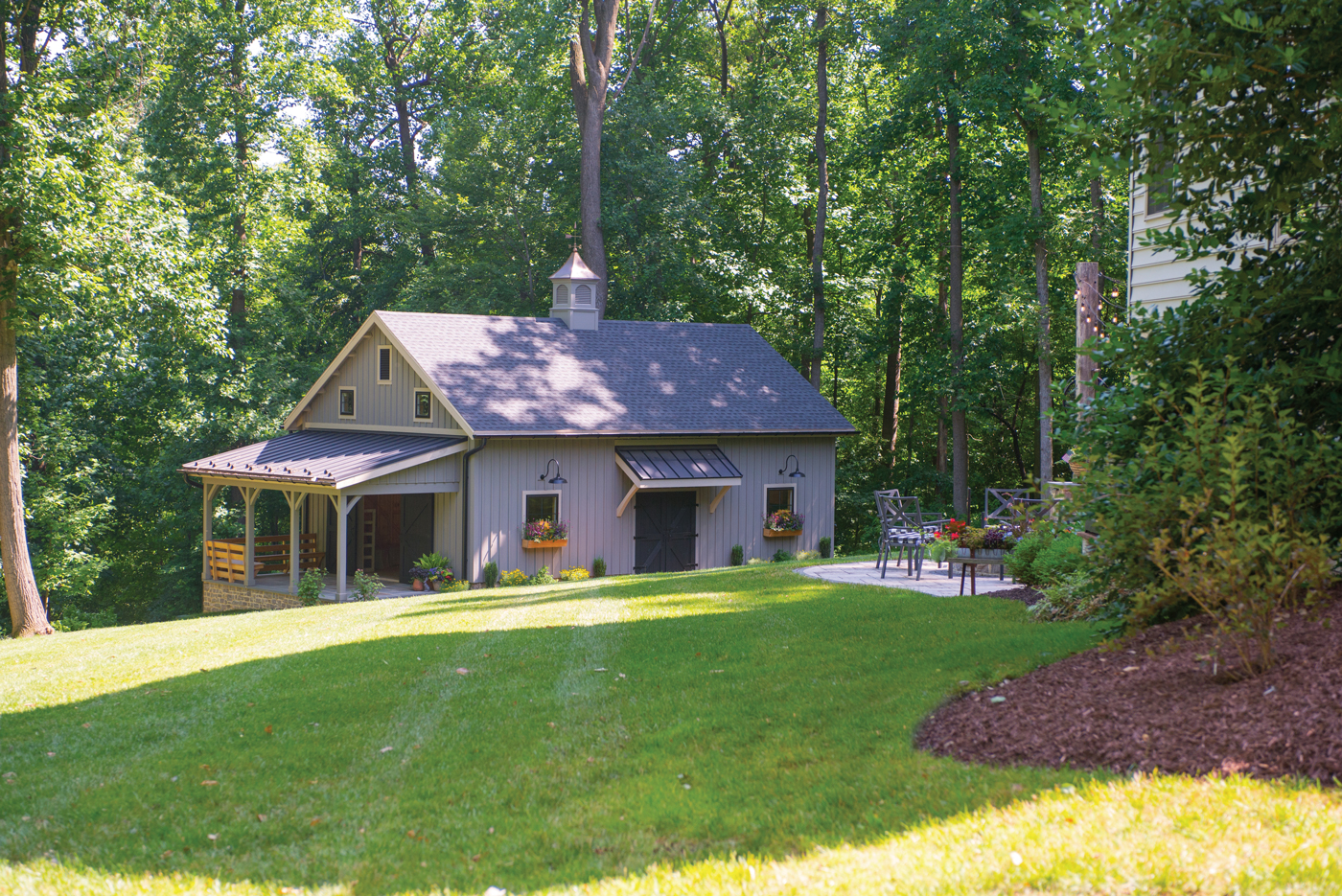
Kendra Herr worked with Lititz-based Trademark Contractors to design/build her New England barn-inspired she-shed that makes its home in a wooded area of her backyard.
The Herrs’ property is always evolving. Three years after building their home in 2005, the couple added a screened porch. Inside, remodeling projects created a large dining room and a combination mudroom/laundry/plant nursery. She views such projects in philosophical terms. “You need to make spaces work for you. Different seasons warrant different needs,” Kendra says, alluding to the fact that she and Matt now host holiday and family gatherings, hence the need for a large dining area.
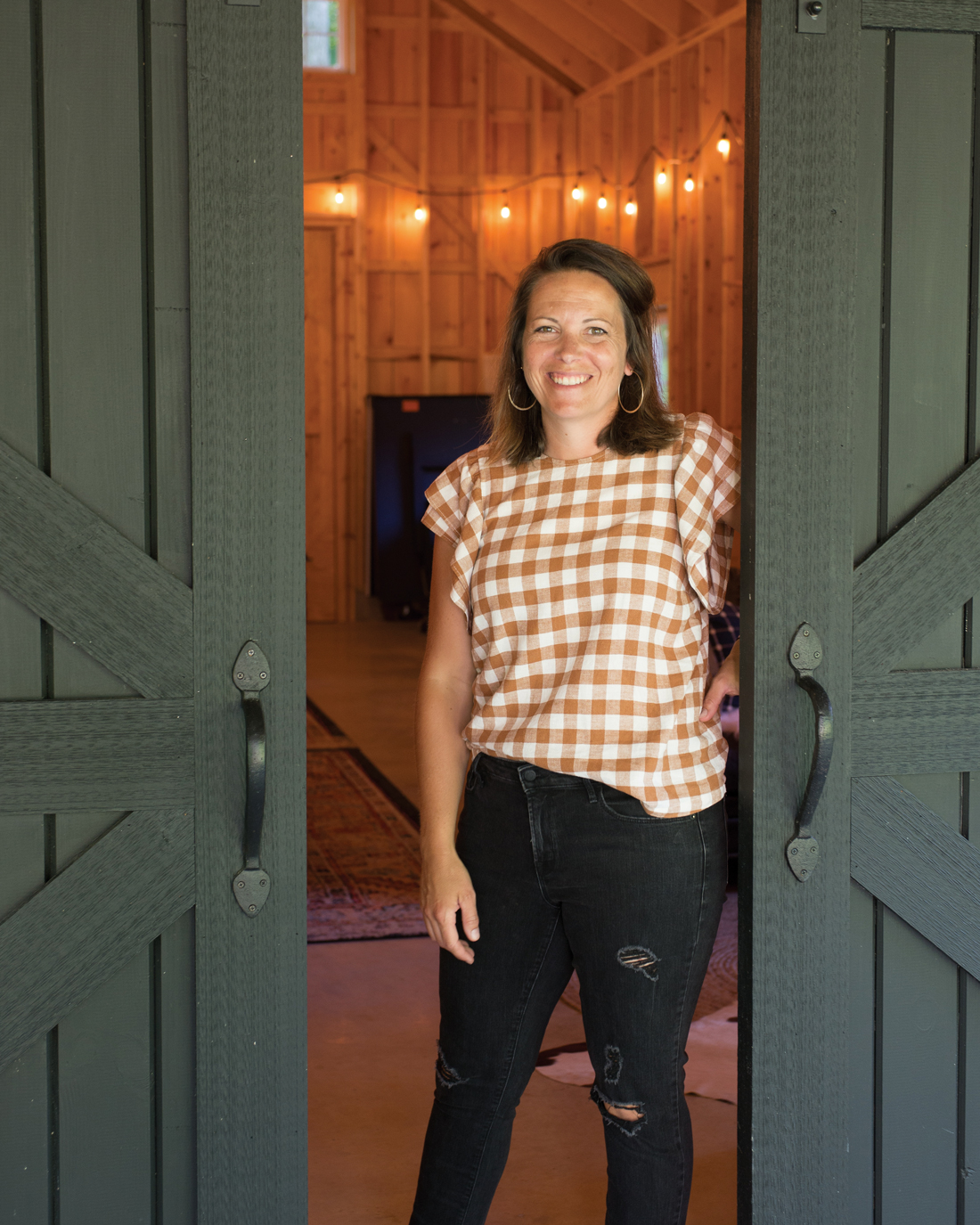
Kendra and her husband, Matt Herr, have been carrying out remodeling projects at their home since building it in 2005. “It’s our haven; we like to stay home,” she says of their lifestyle.
In 2018, they added an expansive patio and firepit. “We lived out there during the pandemic. The kids and their friends really put the firepit to use,” she says of their four children. The sheds were built in 2020. Most recently, they replaced their home’s garage doors and added dormers above the area. “Our house and property have really morphed over the years,” Kendra affirms. “It’s our haven; we like to stay home,” she says of their lifestyle. She gives kudos to Lititz-based Trademark Contractors for the projects they’ve brought to fruition over the years. “They work with us on all our projects,” she notes. “They know I like to think outside the box and work with me.”
A Process
Once spring arrives, the Herrs head outdoors. “We both love to be outside,” Kendra says. “We take care of everything ourselves,” she says of gardening, mowing, landscaping and upkeep. “It’s something we can do together. It’s inspiring when like minds work together.” She says adding the screened porch was one of the best decisions they’ve made. “It’s my very favorite,” she shares. “We’re out there from April through October. You get the advantage of being outside but don’t have to deal with bugs.”
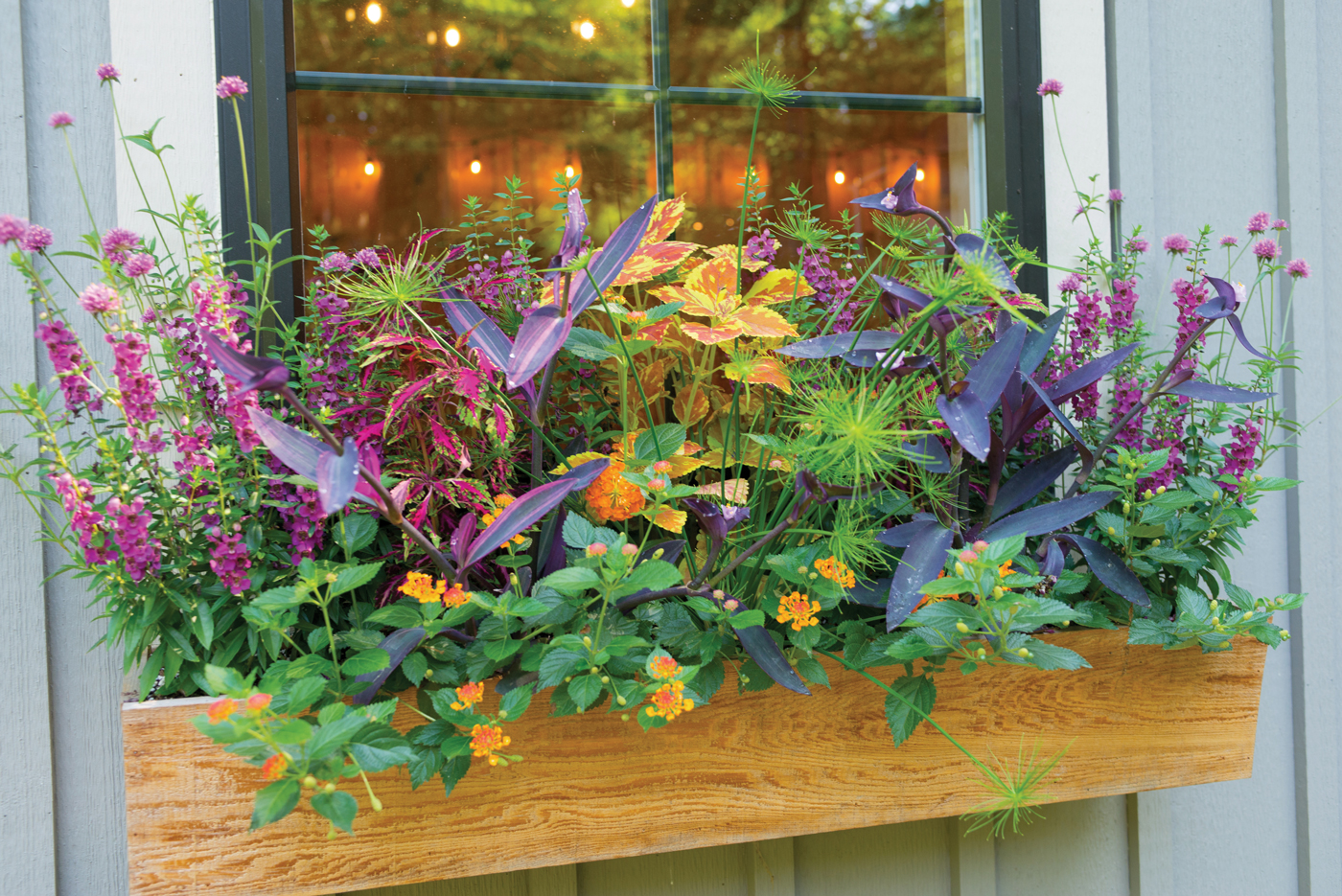
Window boxes filled with a variety of colorful plants decorate the two sheds and stand out against the gray paint.
Kendra, who grew up in Conestoga, points to her father and his sisters as being her inspirations where gardening is concerned. “Thanks to them, I just love to dig in the dirt,” she says. One of her aunts is Carol Mylin, who until her retirement was a floral designer and plantscaper (Carol’s Creations) in Manheim. Kendra embraces the notion that gardening is a lifelong learning process and has discovered that “the more you experiment, the more confident you become.” Her property is challenging from a gardening standpoint, as it requires both sun- and shade-loving plants. She points to working at Henrys’ Farm & Greenhouses in Holtwood for two seasons as an invaluable part of her education. “I learned so much from working there,” she says.
Through Henrys’ Kendra also cultivated a good friend, Stacey Toomey. The two are kindred spirits from a gardening and decorating perspective and are fans of repurposing finds. “Creativity goes beyond decorating,” she explains. “I’m not a DIYer; I like to take things I find at barn sales and places like Tollbooth [in Columbia] and give them a new purpose.”
One of her favorite destinations is The Old Lucketts Store in Loudoun County, Virginia. The store, which makes its home in a century-old general store in Leesburg, was launched as an antiques shop by Suzanne and Pat Eblen in 1996. Today, it’s home to more than three-dozen vendors who specialize in “vintage hip,” which is described as “old, new and cool.”
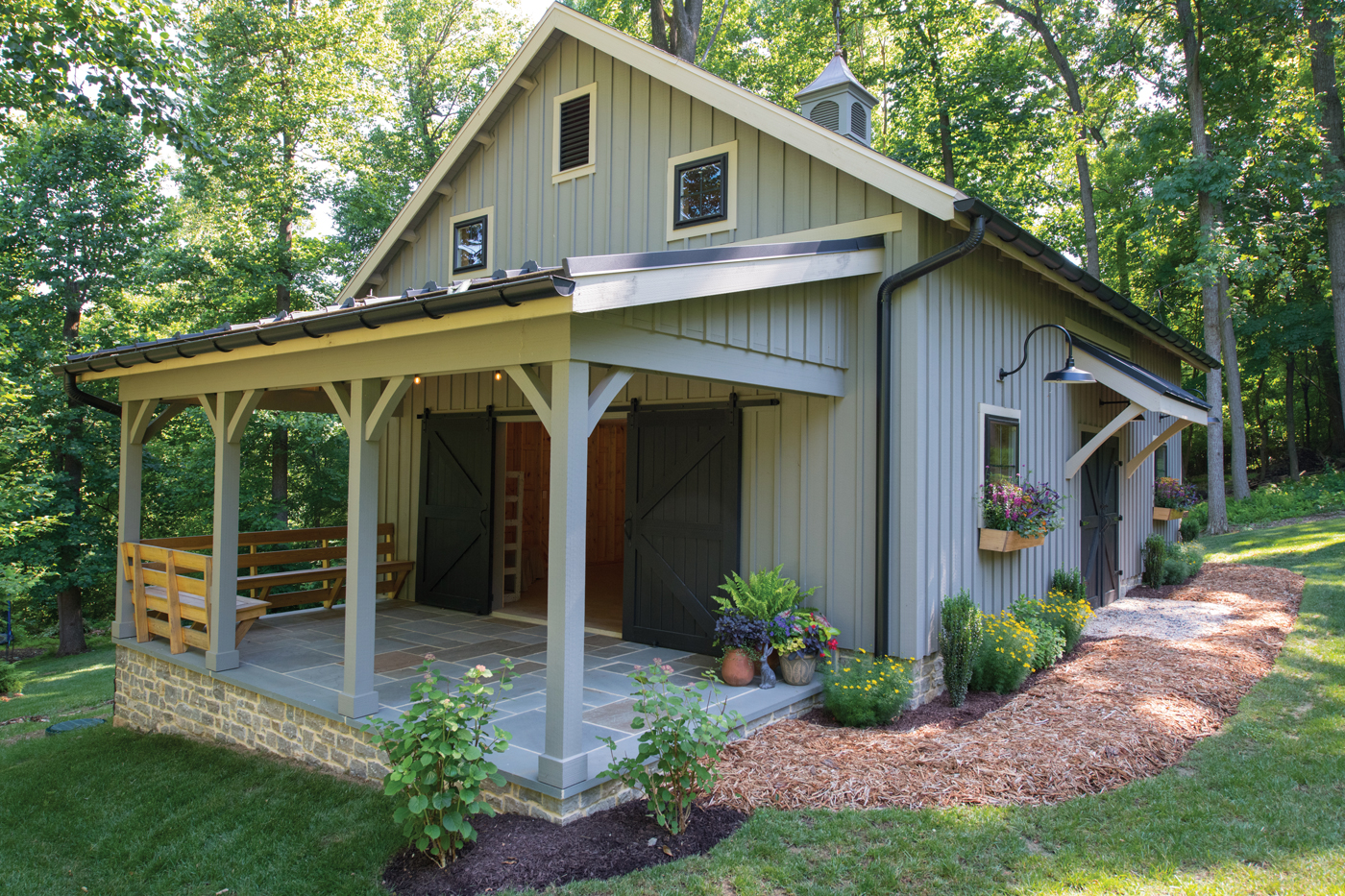
Like many New England barns, Kendra’s she-shed is designed with overhangs, one of which tops an outdoor seating area, while a smaller one provides added protection over a doorway.
A few years after opening, the Eblens decided to host a market-style event in the parking lot of the town’s community center. The response from vendors and fans was overwhelming and Lucketts Spring Market became an annual event (moving for a time to open fields near the store). Covid prompted a pivot to fall in 2021 – Kendra introduced Stacey to Lucketts that year – and, because it proved so popular, Lucketts has made it an annual event, as well. They also found a new home for the extravaganzas at the Clarke County Fairgrounds in Berryville. Dates for the 2023 Spring Market are May 19-21; the Fall Market will be held October 13-15. The store also hosts an over-the-top Holiday Open House each November. Visit luckettsmarkets.com for details.
Moonlight in … Strasburg
Apparently, Lancaster County isn’t the only place where barns are revered. Barns have been an integral part of the landscape in New England for centuries. Kendra and Matt have always liked the look of that region’s barns and worked with Trademark Contractors to bring that look to their backyard.
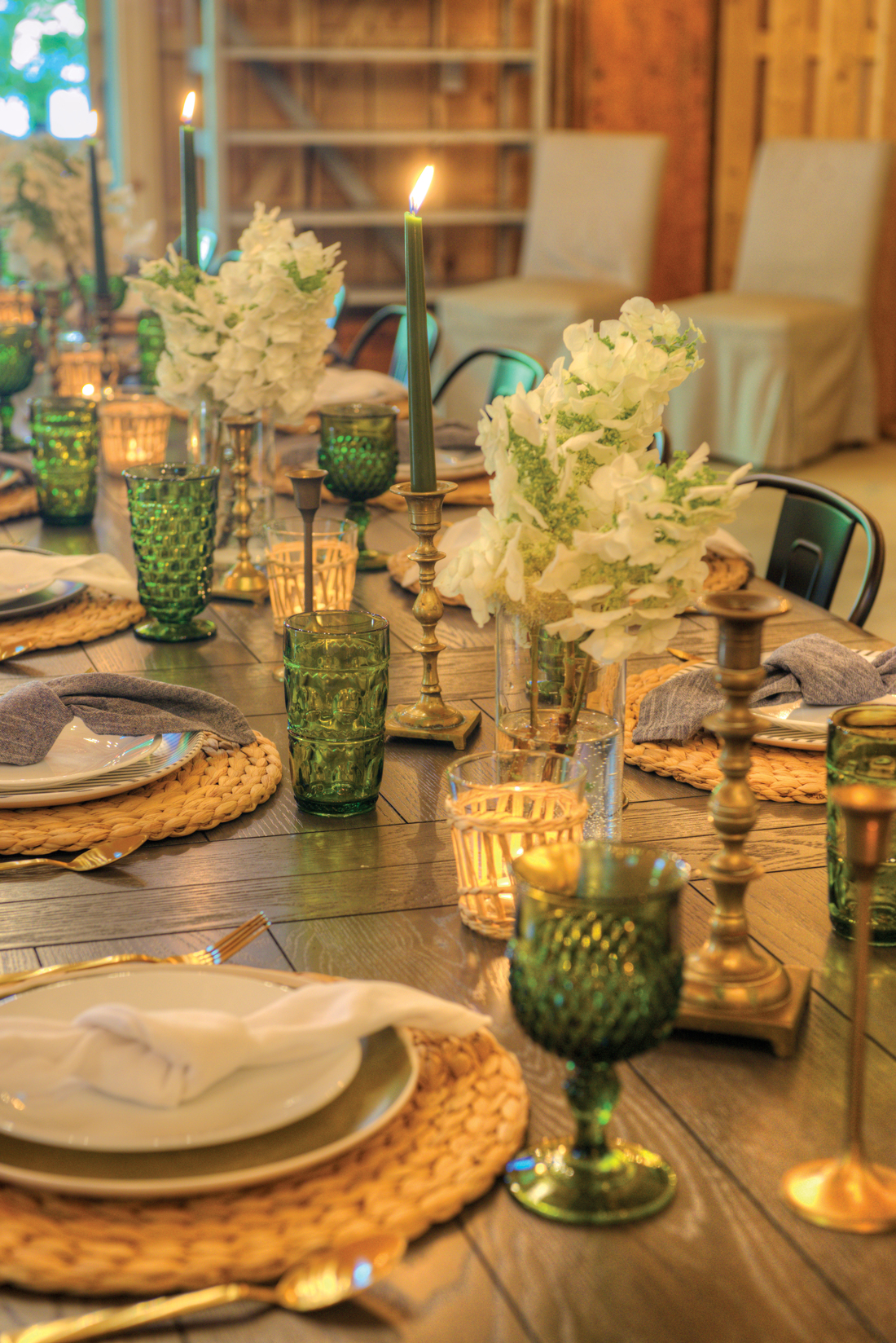
Kendra loves vintage – as is evidenced by the glassware and candlesticks – and uses such finds to set the table for dinner parties and other events she holds in the she-shed. She also tops the table with flowers from her garden.
Like the no-nonsense, practical people who settled New England, the barns of that region reflect Yankee ingenuity, which is defined as the ability to make-do, improvise and cope with the cards they had been dealt (i.e., poor soil and harsh weather). As a result, the barns were built with practicality in mind. Doors were located on the gable ends of the structures and were often topped by overhangs that created a lean-to look and provided added protection from the wind and snow. The open interiors provided space for sheltering animals, crops and farming implements. Early settlers held religious services in the barns.
Many barns were also outfitted with windows, which allowed for light and fresh air to be admitted. Practicality was later taken up a notch, as barns became connected to other outbuildings and even the farmhouse in order to provide easy access to the animals during inclement weather. Color-wise, New England-style barns were painted white, red and even charcoal. “They’re painted just one color,” Kendra adds.
Kendra’s she-shed mimics New England-style barns. Sliding barn doors are located at each end. On one end, an overhang creates a porch-like enclosure. The doors at the other end allow for vehicles to be driven into the structure. Windows also dot the barn. Inside, the exposed wood and overhead beams provide a rustic ambiance for gatherings. “We can comfortably accommodate 40 to 45 people inside the barn,” Kendra says. “We’ve used it for several parties, a bridal shower, a 50th anniversary celebration and our daughter’s rehearsal dinner. The kids and their friends like to hang out in there, too.” (A projector can be set up for watching movies.) She’s also hosted a “barn sale” to re-home items she had accumulated. The barn was also on view last summer for a garden tour.
Kendra’s barn also employs Yankee (or maybe more appropriately Pennsylvania Dutch) ingenuity from a decorating perspective. For example, the sofas and accessories were appropriated from the house. She spied the dining tables at Costco and figured the exceptional price was because they lacked chairs. She bought two and found chairs through an online source. The sideboard was fashioned out of a table that came from a mechanic’s shop. There’s also a sentimental touch: The American flag topped the casket of Matt’s grandfather. “Because of its size, we could never find a place to display it inside the house,” Kendra notes. “It’s a perfect fit out here.”
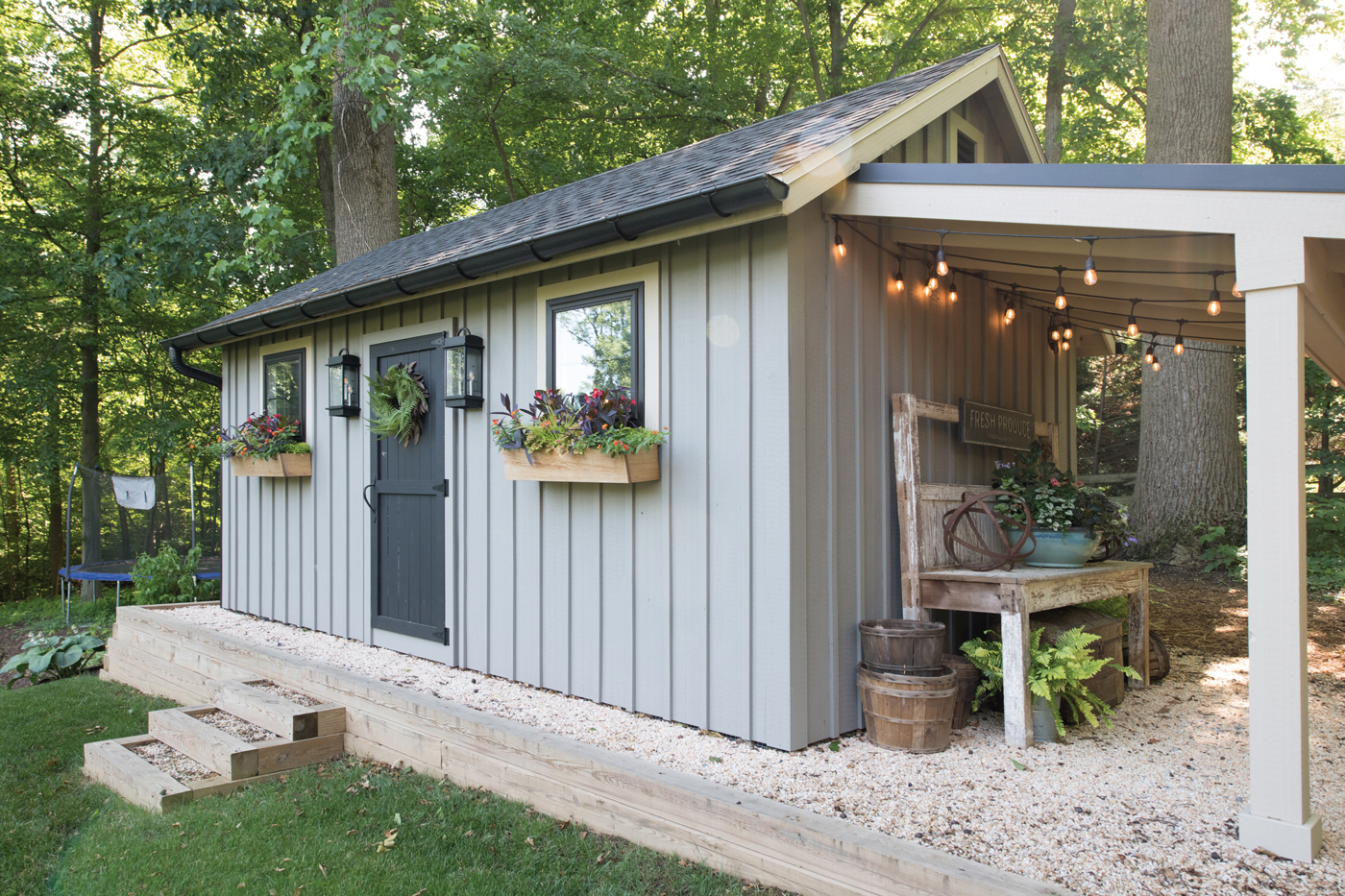
Matt’s smaller he-shed also takes its inspiration from the design of New England barns. It’s used primarily as a tool shed and storage for garden- and maintenance-related items. The overhang shelters a potting bench that once served as a vendor stand at Fulton Market.
Matt’s garden and tool shed also takes its design cue from New England-style barns. “Everything that’s stored in there had been in the garage,” Kendra says. Now, tools and garden necessities are organized and easily accessible. Both sheds are enlivened with container gardens and window boxes that are filled with colorful flowers and plants.
She-shed … a Lifestyle
Over the past 10-plus years, she-sheds have become backyard fixtures and are often described as the female version of the man cave. According to The Spruce, she-sheds differ from man caves in that they “are more about fulfillment,” as they are used for everything from listening to music to working on DIY projects, displaying collections, reading, exercising, tending to plants, hanging out with friends or simply getting away from it all. HGTV prefers to call such structures “me-sheds.” According to Crane Garden Buildings (UK), a she-shed has one purpose: “to make you happy.”
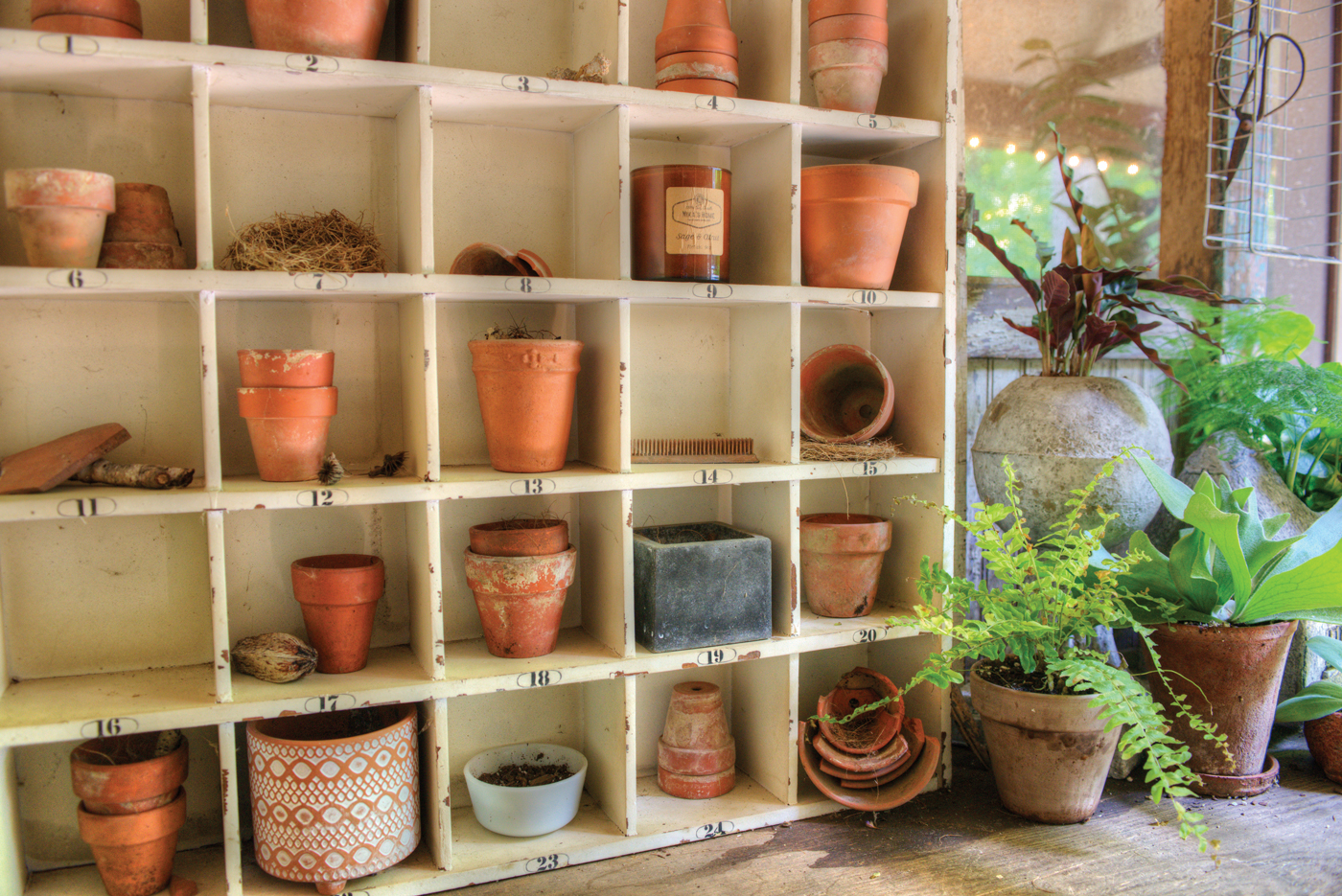
A nook that is located between the screened porch and the garage provides space for another potting area.
During the pandemic, they took on the role of being a home office and many continue to fulfill that function.
She-sheds became part of the landscape when creative women began retrofitting them out of standard garden sheds. Peruse the internet and you’ll notice that savvy shed builders (including the Amish) have taken notice of the trend and have tweaked their designs. Barns, small outbuildings, gazebos and garages are also being pressed into service. New construction (such as Kendra’s she-shed) is also an option.
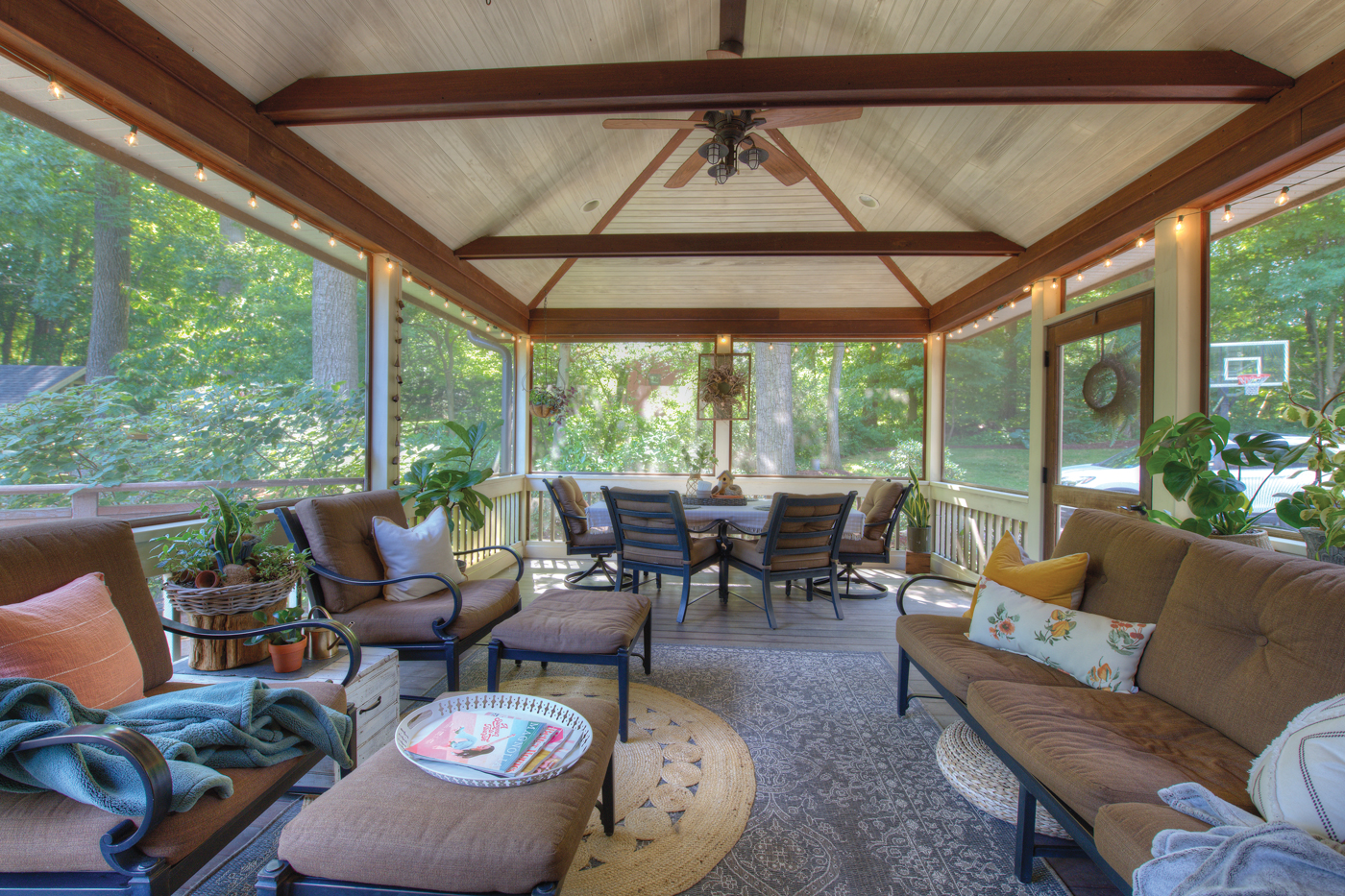
The screened porch was one of the first projects the Herrs completed. Kendra says it’s well-used, as the family relaxes and dines on the porch from April to October.
She-sheds no doubt influenced the advent of the newest addition to the backyard, the Accessory Dwelling Unit (ADU) that creates a separate space (typically 800 square feet or so in size) that is ideal for guests, parents looking to age in place and even as a short- or long-term rental.
She-sheds have also taken on a virtual life of their own thanks to Californians Erika Kotite (a former magazine editor and author of the book, She-sheds: A Room of Your Own) and Sabrina Conteras (an interior designer), who host the website, sheshedliving.com (plus other social media sites), and have been designing, building and promoting she-sheds for years. I guarantee that the projects seen on their sites will make you look longingly at the possibilities your own backyard can offer.
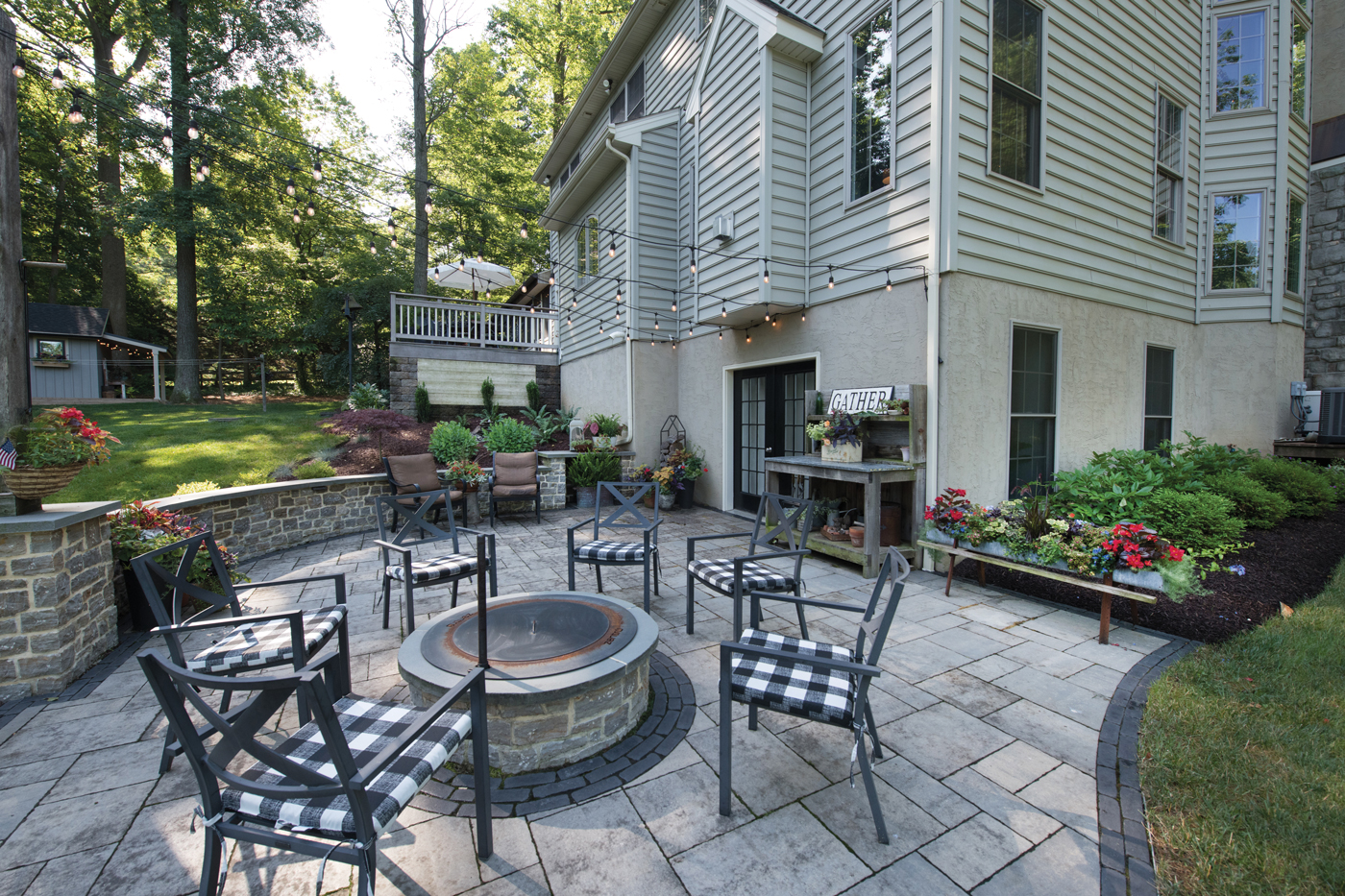
The Herrs worked with Knutsen Outdoor in Conestoga to create the patio and firepit. Prior to the addition of the patio, the area was an expanse of lawn.
Kendra’s Favorite Greenhouses
Henrys’ Farm & Greenhouses,
1258 Oregon Hollow Rd., Holtwood (self-serve stand, cash only)
Hilltop Greenhouse,
1624 Lancaster Pike, Quarryville
Hillside Acres Nursery,
940 Valley Rd., Quarryville
Fisher’s Greenhouse,
311 North Star Rd., Strasburg





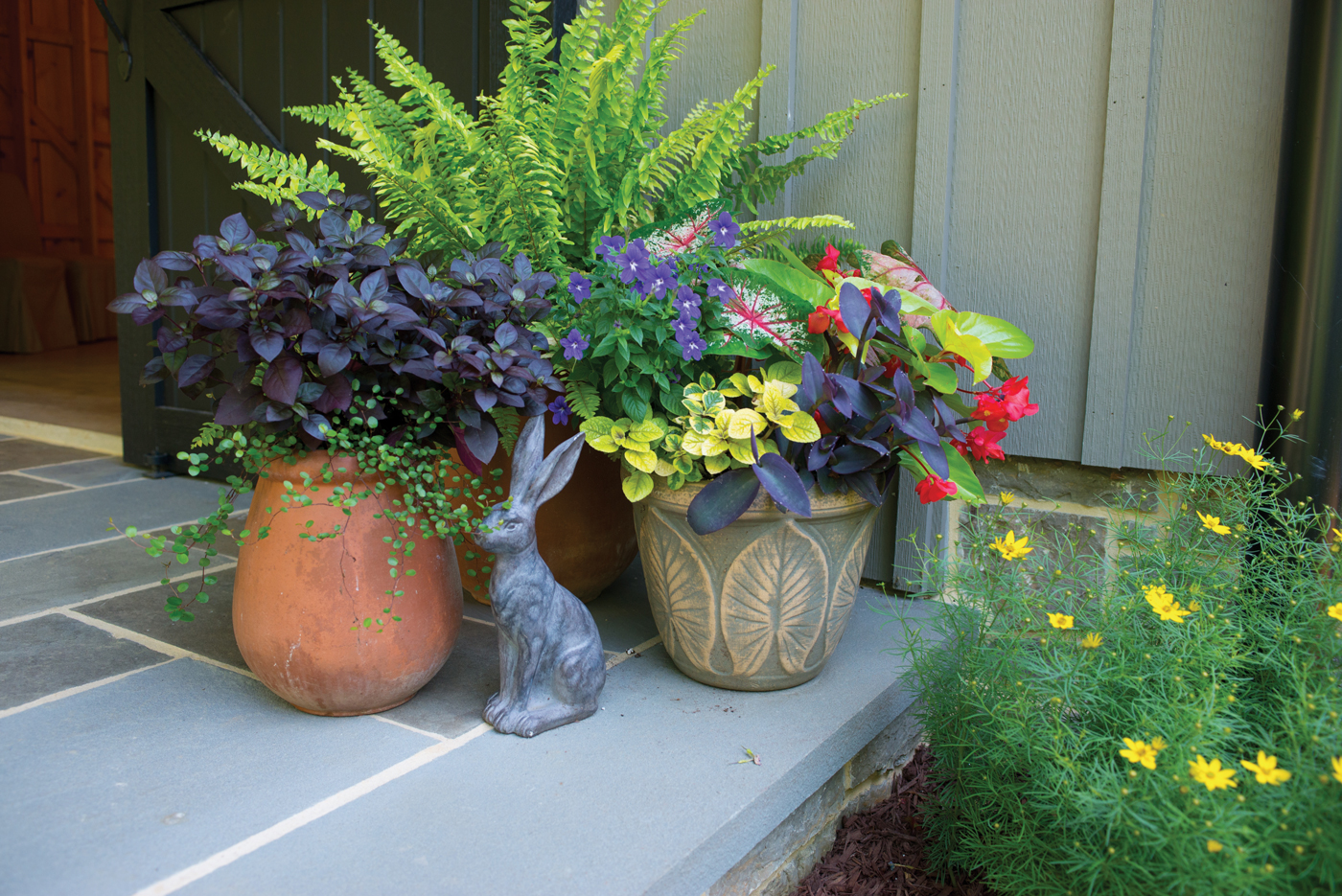
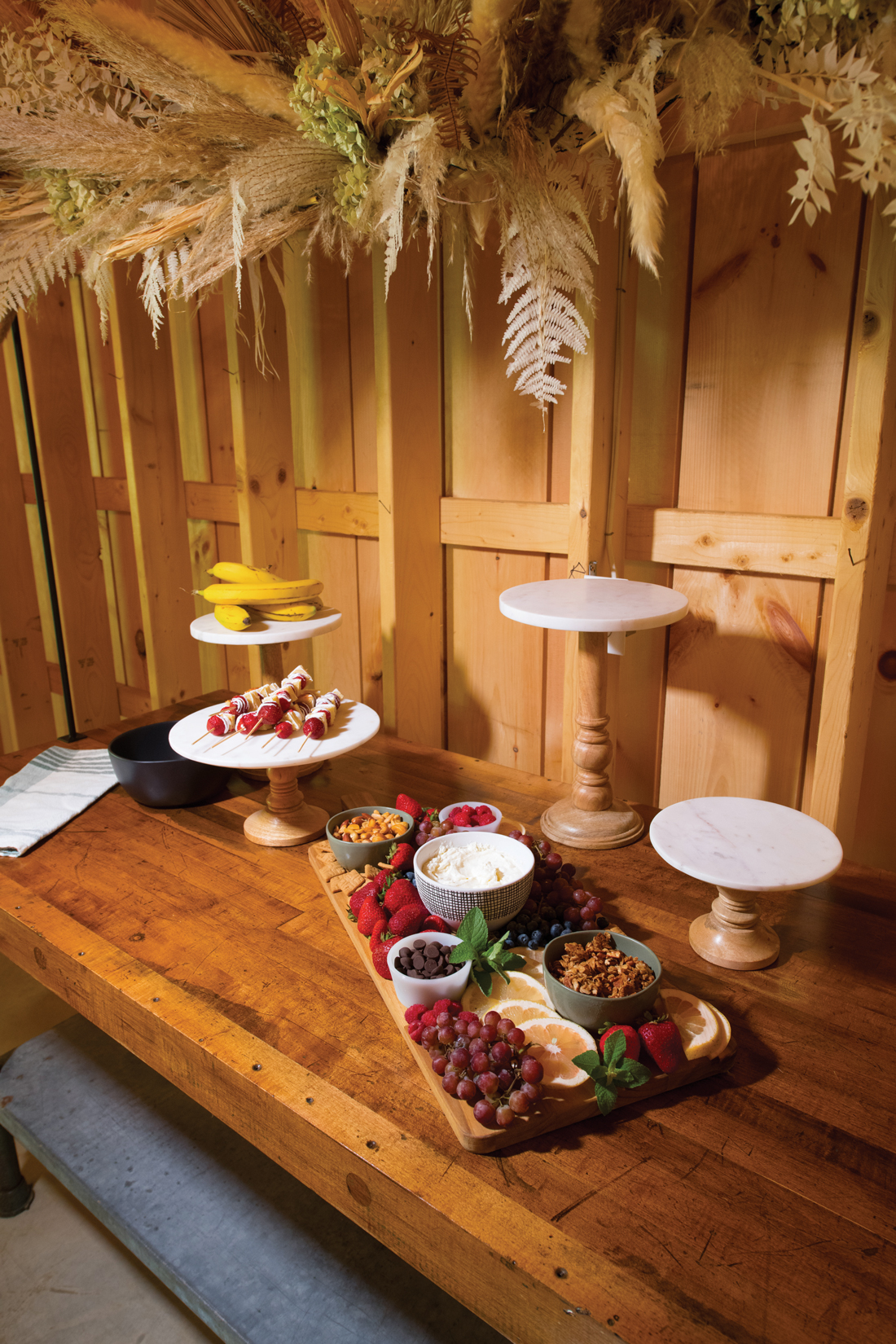
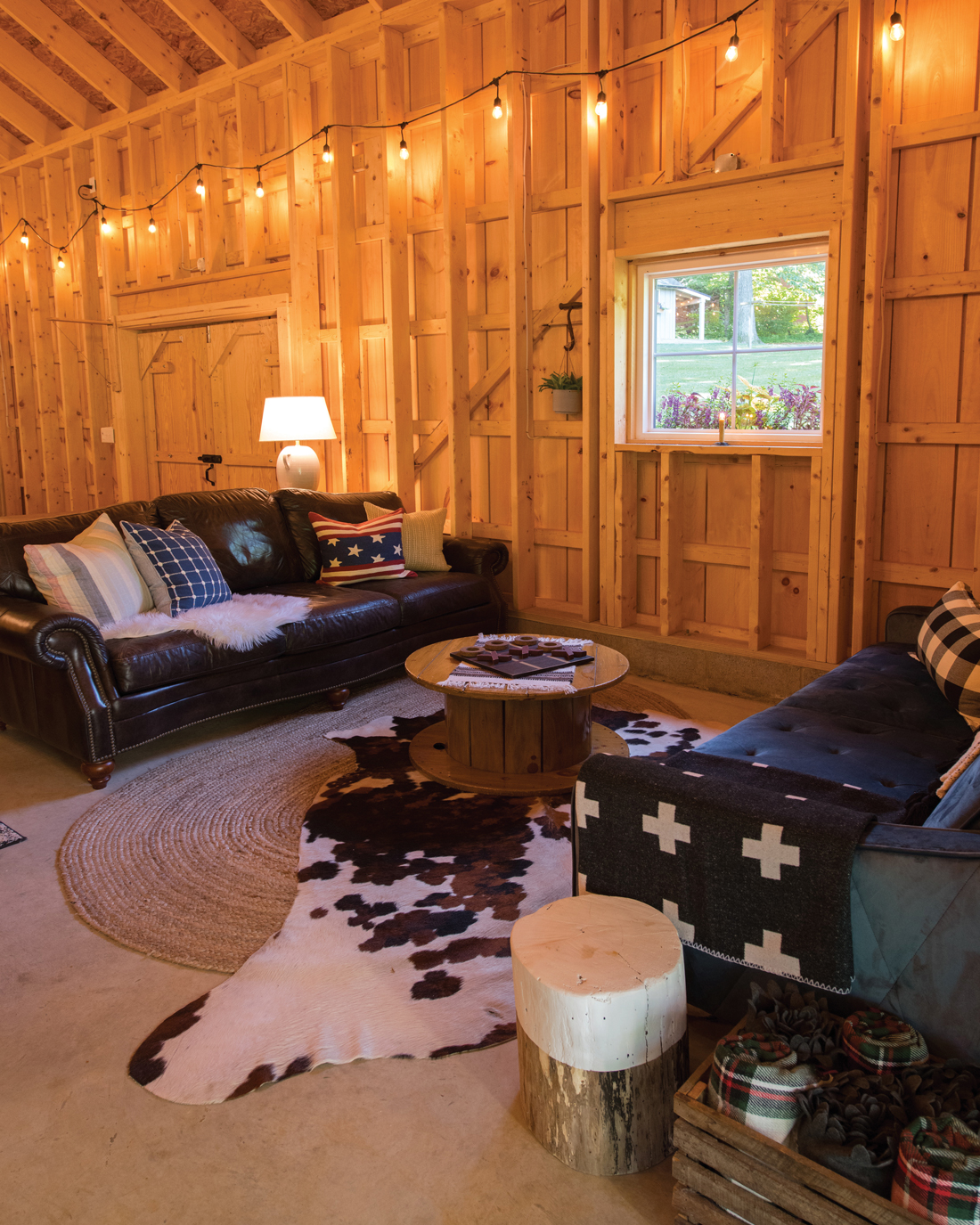
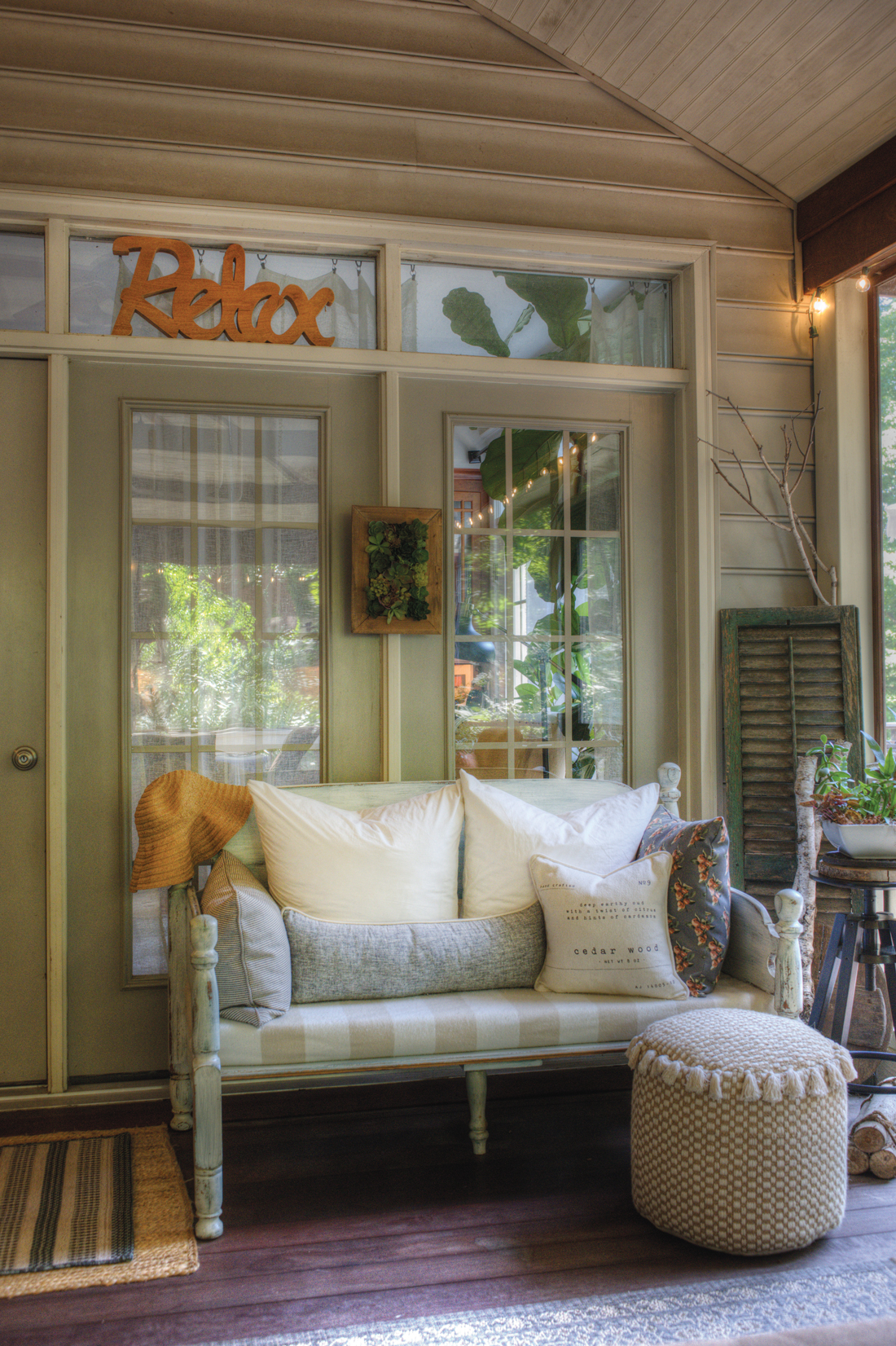
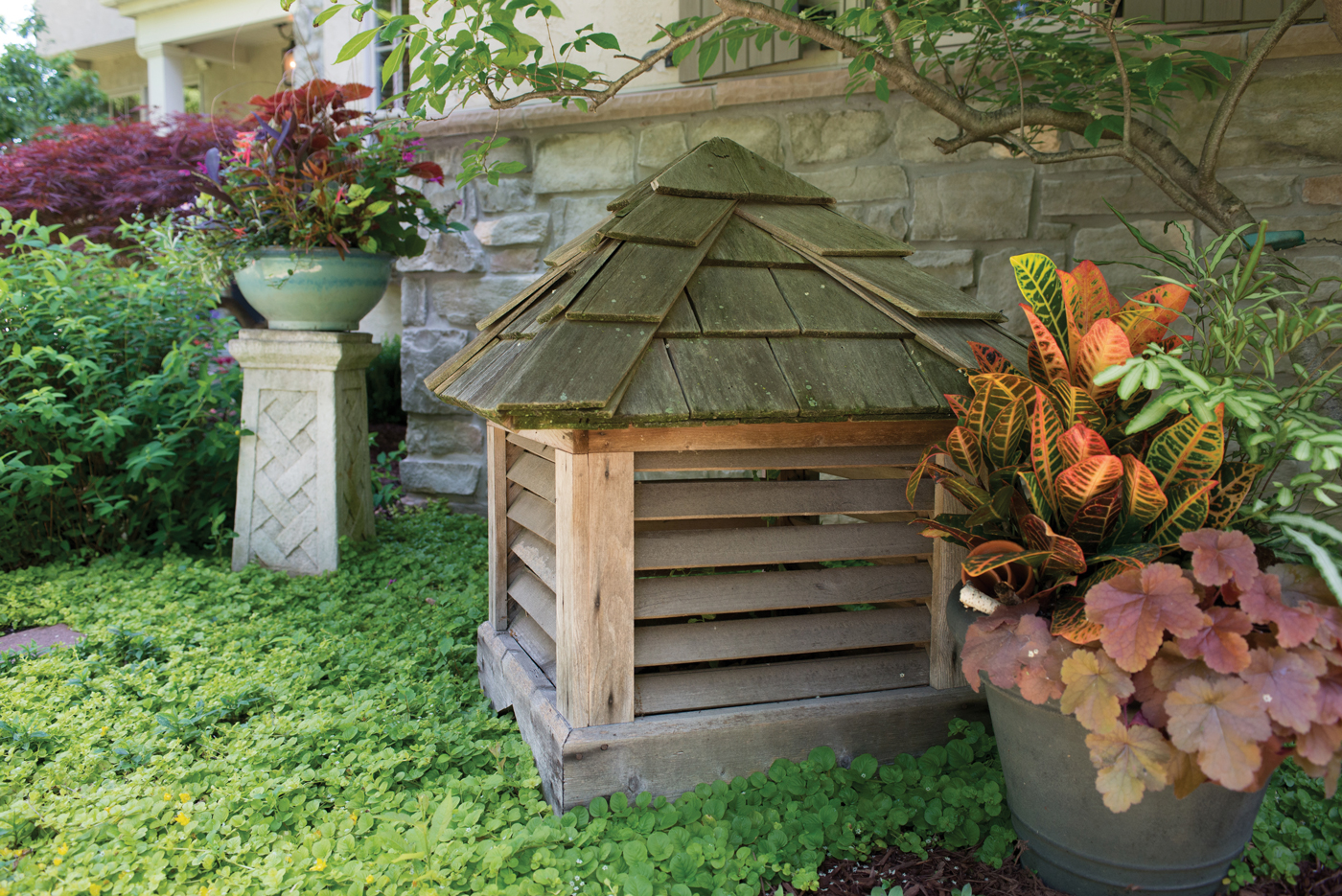
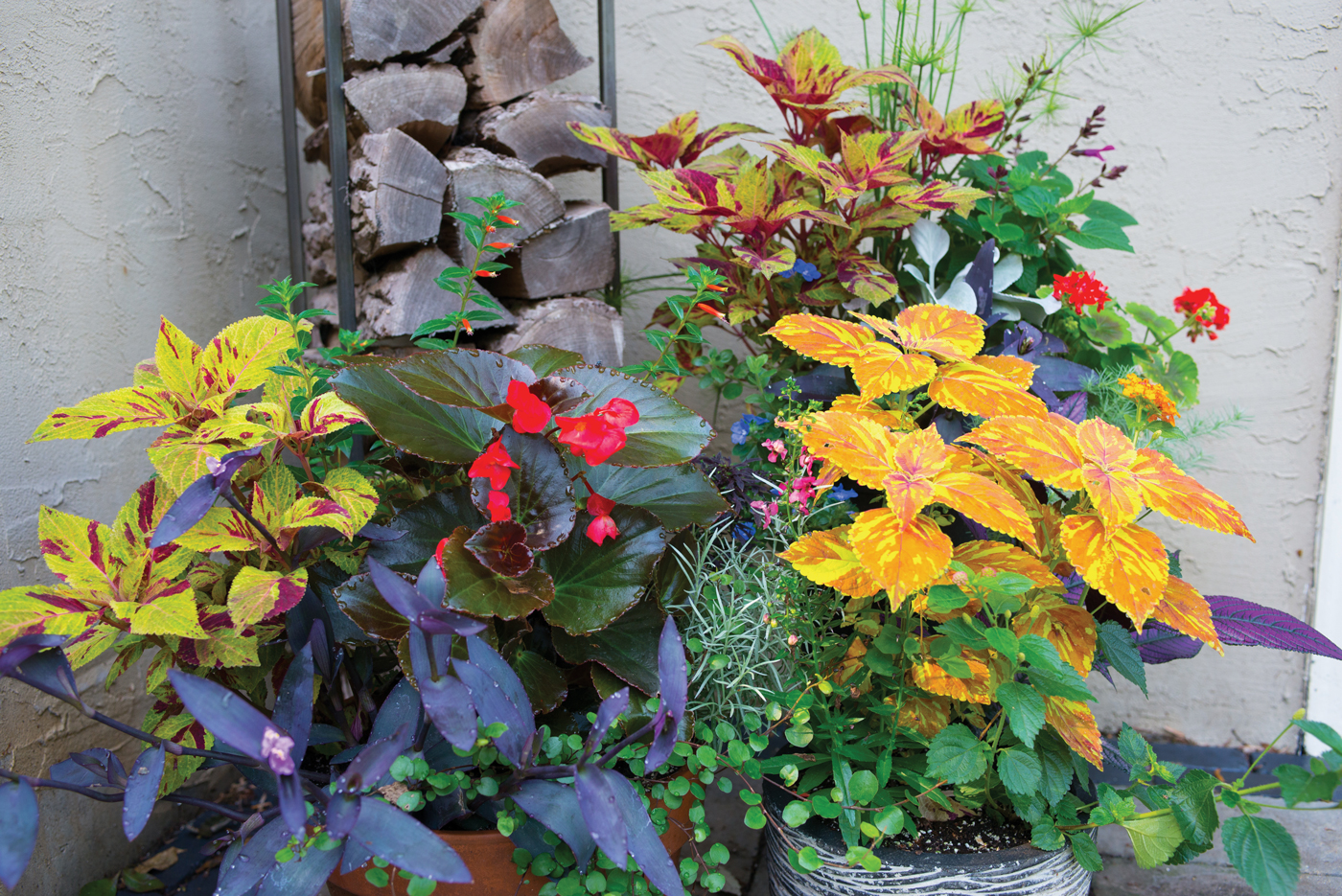
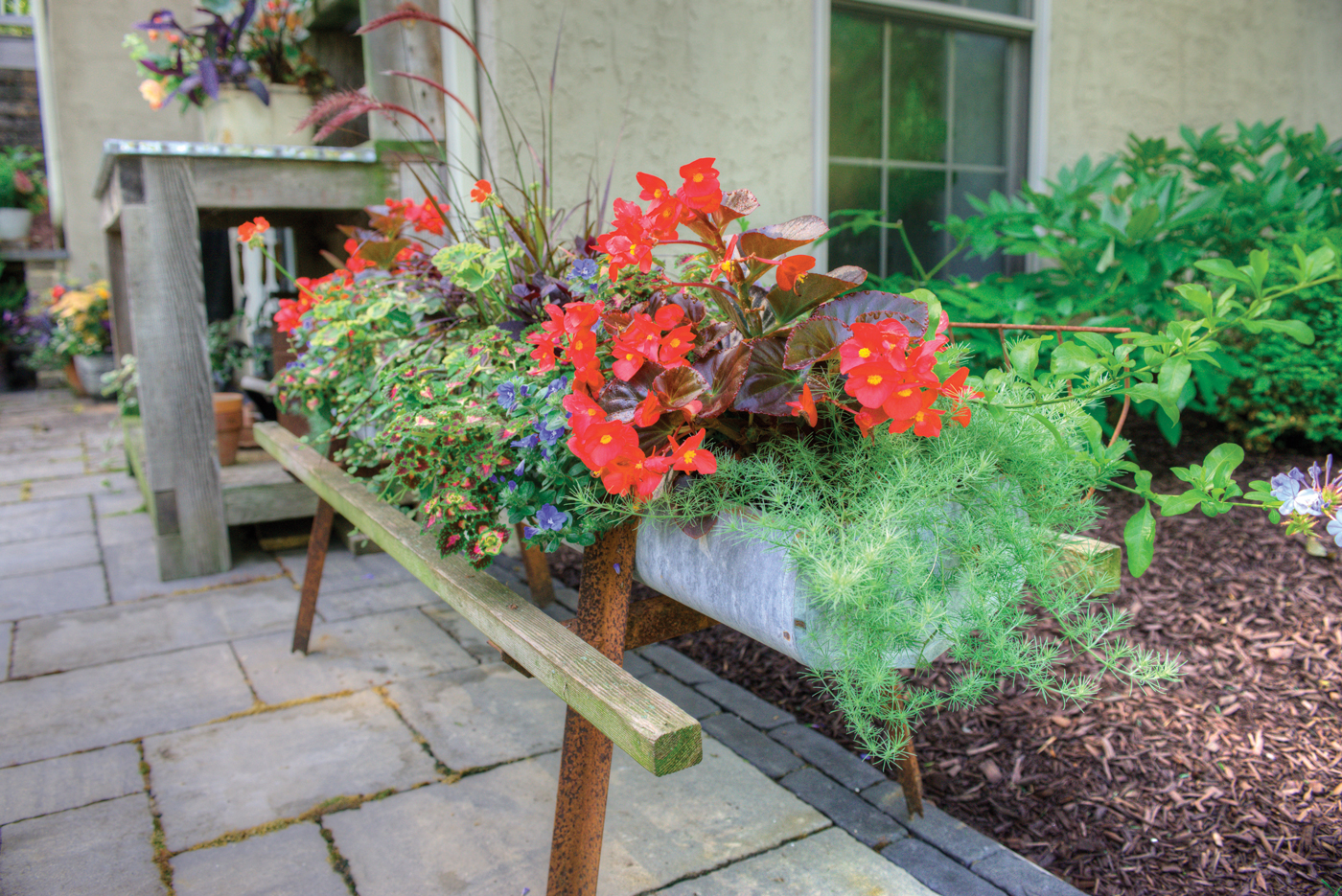
SHARE
PRINT